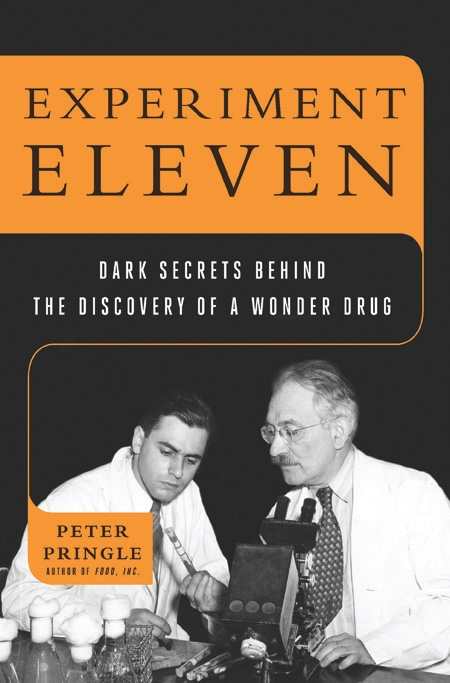
Experiment Eleven
Dark Secrets Behind the Discovery of a Wonder Drug
In the era of Big Pharma and the never-ending search for better, more targeted drugs, it is easy to forget that the age of pharmaceuticals is still relatively young; the first effective antibiotic, penicillin, was only discovered in 1928. Experiment Eleven: Dark Secrets Behind the Discovery of a Wonder Drug follows the discovery and development of another major antibiotic, streptomycin, which was the first true cure for tuberculosis.
During the height of World War II, scientists were scrambling to find treatments for the infections attacking US troops abroad as well as civilians at home. In 1943, a twenty-one-year-old PhD student, working with the respected Rutgers microbiologist Selman Waksman, identified streptomycin from the culture of a chicken’s throat. The young Albert Schatz then proceeded to test the bacteria against active strains of the deadly tuberculosis germ, at considerable risk to himself. Schatz and Waksman filed for a patent together in 1944; however, in 1946, Waksman suggested to Schatz that they relinquish their claim and transfer the ownership of streptomycin to Rutgers so it would not be controlled by a single company or person. Waksman was lauded in the press as a “great humanitarian,” yet what he purposefully hid from Schatz and the public was that he had secured a deal with the college for 20 percent of the royalties.
In the following years, Waksman diminished Schatz’s role in the discovery, taking increasingly more credit, and wealth, for himself. In a move that shocked the medical and academic communities, Schatz, after discovering Waksman’s deception, sued for his share of the royalties, but also, more importantly, the title of “co-discoverer.” He won the lawsuit, but in 1952 Waksman won the Nobel Prize for the discovery of streptomycin with no mention of Schatz’s contribution. Heartbroken, Schatz would never again hold a research position at any university, and the truth of his role in the discovery of streptomycin would not be recognized until the 1990s.
Peter Pringle, the author of Food, Inc. and a writer for the the New York Times and the Washington Post, relates Schatz and Waksman’s story with a sharp eye for detail and and a thorough scientific understanding. In five sections, he chronicles the scientists’ relationship from beloved mentor and student to bitter rivals. At times, Pringle’s dry, analytical style diminishes the emotional aspect of Schatz and Waksman’s struggle; however, the immense toll that the battle took on Schatz is apparent by the end of the book. In 1989, a British microbiologist rediscovered Schatz’s contribution and requested to interview the elderly scientist. When he asked what Waksman’s winning the Nobel Prize meant to him, “there was a long pause on the tape. Then, softly, Schatz started to sob. Then his anguish grew and he let out a long howl.” Experiment Eleven offers readers a comprehensive explanation of the scientific and legal ramifications of the streptomycin controversy as well as a window into the emotional impact the struggle had on both scientists.
Reviewed by
Claire Posner
Disclosure: This article is not an endorsement, but a review. The publisher of this book provided free copies of the book to have their book reviewed by a professional reviewer. No fee was paid by the publisher for this review. Foreword Reviews only recommends books that we love. Foreword Magazine, Inc. is disclosing this in accordance with the Federal Trade Commission’s 16 CFR, Part 255.
